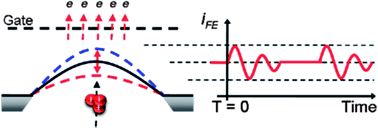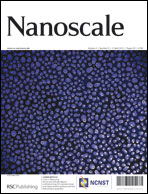Mechanical resonators realized on the nano-scale by now offer applications in mass-sensing of biomolecules with extraordinary sensitivity. The general idea is that perfect mechanical biosensors should be of extremely small size to achieve zeptogram sensitivity in weighing single molecules similar to a balance. However, the small scale and long response time of weighing biomolecules with a cantilever restrict their usefulness as a high-throughput method. Commercial mass spectrometry (MS) such as electro-spray ionization (ESI)-MS and matrix-assisted laser desorption/ionization (MALDI)-time of flight (TOF)-MS are the gold standards to which nanomechanical resonators have to live up to. These two methods rely on the ionization and acceleration of biomolecules and the following ion detection after a mass selection step, such as time-of-flight (TOF). Hence, the spectrum is typically represented in m/z, i.e. the mass to ionization charge ratio. Here, we describe the feasibility and mass range of detection of a new mechanical approach for ion detection in time-of-flight mass spectrometry, the principle of which is that the impinging ion packets excite mechanical oscillations in a silicon nitride nanomembrane. These mechanical oscillations are henceforth detected via field emission of electrons from the nanomembrane. Ion detection is demonstrated in MALDI-TOF analysis over a broad range with angiotensin, bovine serum albumin (BSA), and an equimolar protein mixture of insulin, BSA, and immunoglobulin G (IgG). We find an unprecedented mass range of operation of the nanomembrane detector.

You have access to this article
 Please wait while we load your content...
Something went wrong. Try again?
Please wait while we load your content...
Something went wrong. Try again?


 Please wait while we load your content...
Please wait while we load your content...